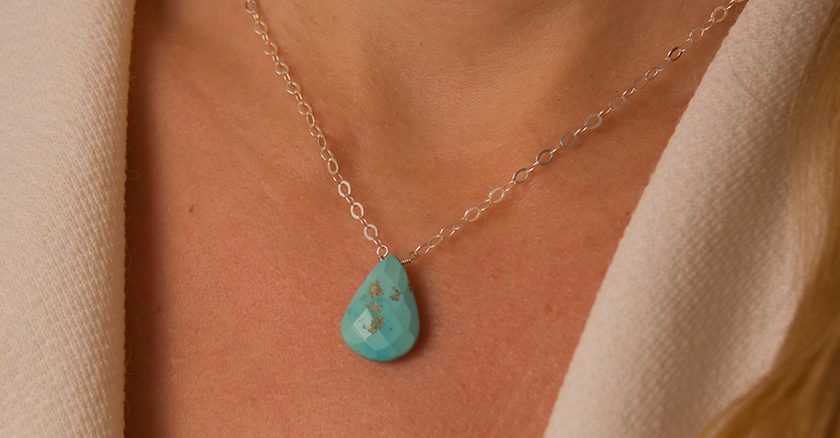When you think of blue gemstones, sapphire and tanzanite are two names that often pop in your mind, right? But lately, another blue gemstone is gaining a lot of popularity – turquoise. With its captivating bluish-green color, the gem has managed to grab the attention of many. Jewelry adorned with this semi-translucent to opaque mineral can never go amiss. If you are mesmerized by its beauty and planning to buy turquoise gemstone jewelry, here are some fascinating facts about this gem that will leave you surprised!

1. Turquoise Is One of the World’s Oldest Gemstones
Turquoise is said to be one of the world’s oldest gemstones. Did you know it is the national gem of Tibet? Ancient Tibetans wore the gemstone for good luck and prevention from evil. Also, archeologists have found carved turquoise pieces in China that are more than 3,000 years old! It was also a popular gemstone in ancient Egypt; the rulers often used the vibrant blue gem in jewelry and for decorative purposes.
2. Its Name Is Derived from the French Term ‘Turquois’
The name turquoise is coined from the French term ‘turquois’ which simply means ‘Turkish.’ Wondering why the gemstone has been named after Turkey? Because even though the gem was found in Iran, it was brought to Europe via Turkey, hence the name. It is said that the bluish-green gem was named turquoise in the 13th century!
3. The Only Gemstone to Have a Color Named After It
Another interesting fact about turquoise is that it is the only gemstone that has a color named after it. This is partly because very few minerals exude such a unique and vibrant color. The most sought-after turquoise hue is a pure sky blue, also called as the robin’s egg blue. The presence of copper gives the gem its beautiful blue color whereas the presence of iron/aluminum adds the greenish hue.
4. Turquoise Is Found in Dry, Barren Regions
Turquoise requires a very specific environment for its formation. It is only found in areas where the land is dry and barren. The formation starts when acidic, copper-rich water seeps into the barren ground and reacts with minerals containing phosphorus and aluminum.. Iran produces the best quality turquoise, but the gemstone is also mined in Afghanistan, China, Australia, Chile, Brazil, Mexico and the United States.
5. Ancient Cultures Considered It to Be a Holy Stone
For centuries, turquoise was considered to be a holy stone and carrier of good fortune by people all over the world. Some cultures believed that the stone had the ability to change color and warn its wearer of an impending danger. The ancient Egyptians held the gemstone in high regard because Pharaoh Tutankhamun’s iconic mask features turquoise.
Did You Know?
- Turquoise is the official birthstone of December alongside tanzanite. It is also the 11th anniversary gemstone.
- Turquoise ranks between 5 to 6 on the Mohs scale of mineral hardness, which means it is fairly durable.
Also Read: What Gives Turquoise Its Color?
5 Fascinating Facts About Turquoise FAQs
- What Is Turquoise Known For?Turquoise is known for its unique bluish-green color. It is a versatile color that can be easily included in everyday looks. Some ancient cultures also associated the gemstone with good fortune, protection from the evil and wisdom.
- Where Is Turquoise Most Commonly Found?Turquoise is mined in many countries around the world such as Australia, Mexico, Brazil, Chile, Afghanistan and others. However, the most valuable stones are found in Iran.
- Is It Okay to Wear Turquoise in Water?Turquoise is porous and absorptive in nature. When exposed to water or oil, it will absorb it all like a sponge. This may cause the gemstone to change its color. Therefore, it is not recommended to wear the gemstone while taking a shower or doing household chores.




























